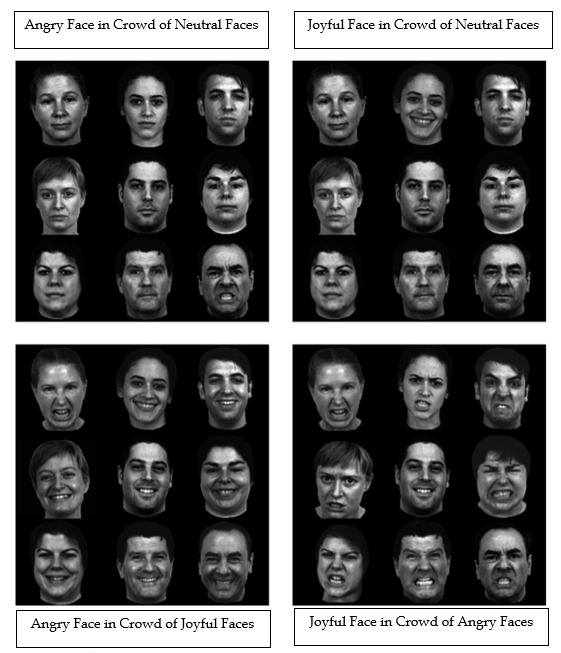Chapter 8: Fear, Anxiety, and Stress
Evolutionary Evidence – Visual Search Paradigm
Figure 6
Visual Search Paradigm from Pinkham et al. (2010)

Adapted from “The face in the crowd effect: Anger superiority when using real faces and multiple identities. ,” by A.E. Pinkham, M. Griffin, R. Baron, N.J. Sasson, and R.C. Gur, 2010, Emotion, 10(1), p. 143. (The face in the crowd effect: Anger superiority when using real faces and multiple identities.). Copyright 2010 by American Psychological Association.
Basic emotions researchers believe that as part of the fear emotional experience, the brain, particularly the amygdala, is biased to quickly identify threatening facial expressions in other people, such as an anger facial expression. This threat-advantage bias means that over time, our brains and visual systems evolved to quickly and accurately identify threat in facial expressions and in animals our environment (Horstmann & Bauland, 2006; Öhman, Lundqvist, et al., 2001; Öhman & Mineka, 2001). Yet, Pinkham et al. (2010) findings suggest this mechanism operates best when the threatening facial expression occurs in a neutral versus emotional crowd, suggesting that mismatched emotional expressions could distract our amygdala from quickly and accurately detecting the threat.

